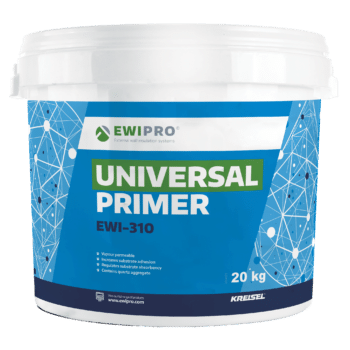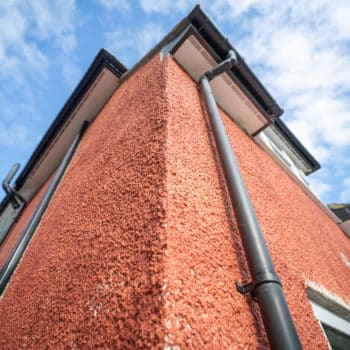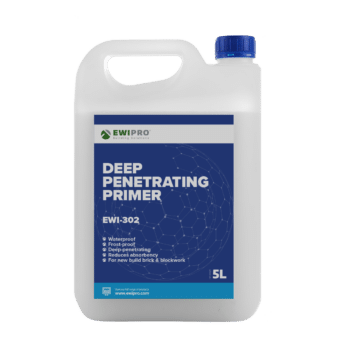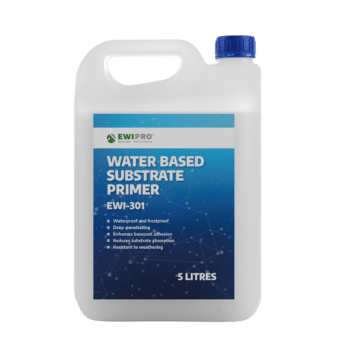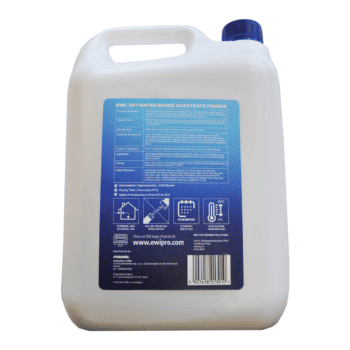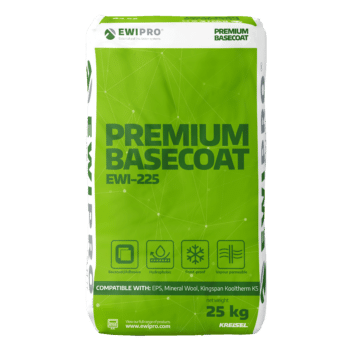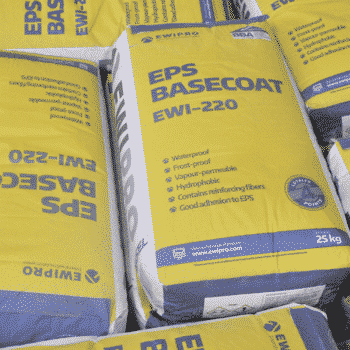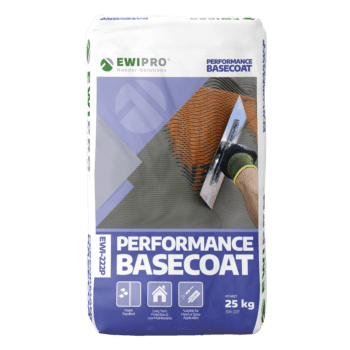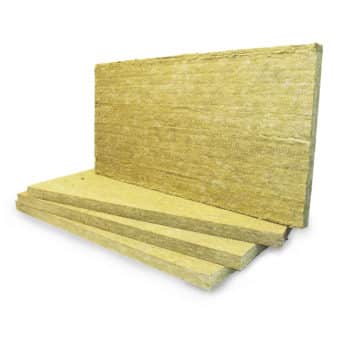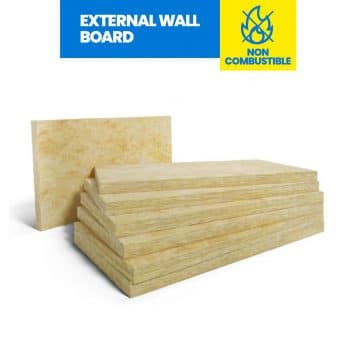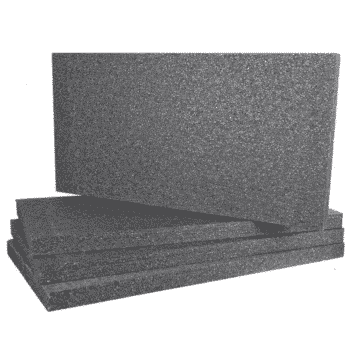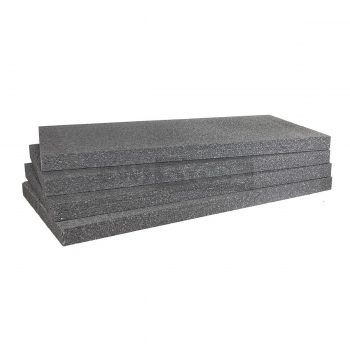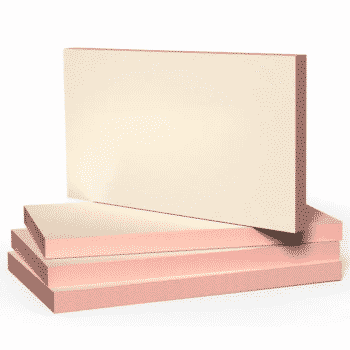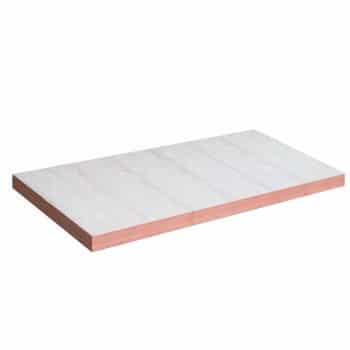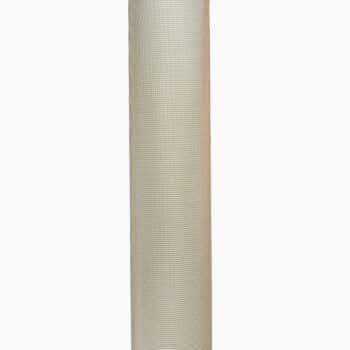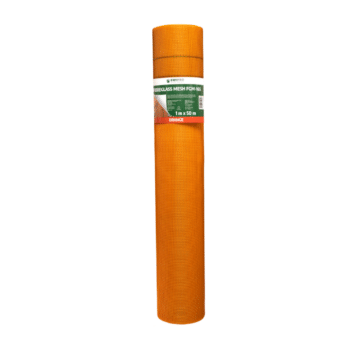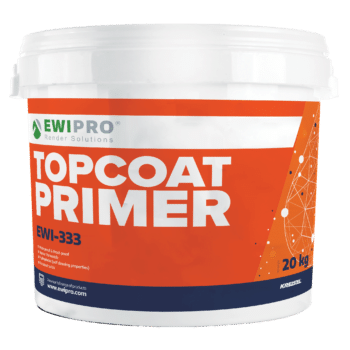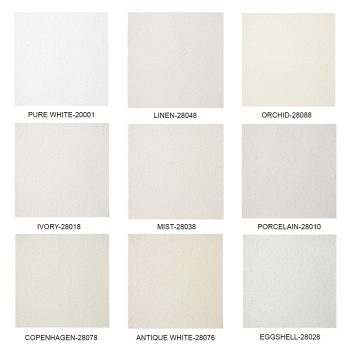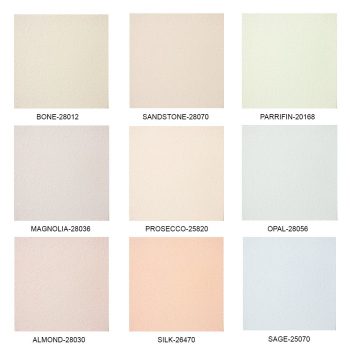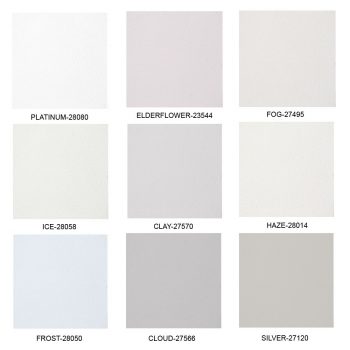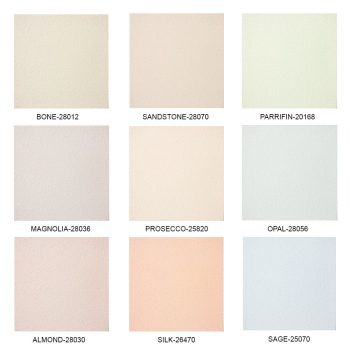What Makes up an EWI System?
An External Wall Insulation system is a crucial element in promoting energy efficiency. The concept hinges on creating an uninterrupted thermal envelope. Therefore, every component in the EWI system has to work harmoniously to ensure there are no breaks in the envelope. At EWI Store, we provide the full range of materials required, from adhesive all the way to Swifix fixings. In today’s blog, we will dissect how each component contributes to the system.
Why is an EWI system essential?
A continuous thermal envelope significantly improves the energy efficiency of a building. By providing a seamless layer of insulation, heat transfer between the interior and exterior of the building is reduced. This means less energy is needed to heat or cool the building, leading to lower energy bills and reduced greenhouse gas emissions.
By regulating heat transfer, a well-insulated thermal envelope can maintain a more stable indoor temperature. This enhances the comfort levels inside the building, providing a consistently comfortable living or working environment, regardless of the weather conditions outside.
An uninterrupted thermal envelope helps prevent thermal bridging, which occurs when heat bypasses the insulation through more conductive materials in the building envelope. Thermal bridges can significantly reduce a building’s overall thermal performance. By ensuring the insulation is continuous, thermal bridging is minimised, and the insulation performs to its full potential.
A continuous thermal envelope reduces the risk of condensation within the building’s walls and roof. This is because it helps maintain the surface temperatures of these elements above the dew point of the interior air. Preventing condensation reduces the risk of dampness and mould growth, which can be harmful to both the building’s and its occupants’ health.
With a well-sealed thermal envelope, there’s less infiltration of outdoor air, which can often contain dust, allergens, pollutants, and even pests. Therefore, indoor air quality can be better controlled and maintained, contributing to healthier living and working conditions.
An uninterrupted thermal envelope helps protect the building’s structure from potential damage caused by moisture and temperature fluctuations, contributing to the building’s long-term durability and reducing maintenance costs over time.
Substrate Primer
Substrate primer acts as a sealer and bonding agent for the EWI system. This compound is often water-based and designed to penetrate and seal porous substrates. Applying the primer helps ensure that the substrate doesn’t absorb the moisture from the adhesive and compromises the bonding process. It also helps reduce dust and improves the adhesive’s grip on the surface, creating a more secure base for subsequent layers.
-
Universal Primer (EWI-310) – 20kg
Rated 4.40 out of 5£64.82 Incl. VAT£54.02 Excl. VAT£72.04 Incl. VAT£60.03 Excl. VAT -
Deep Penetrating Primer (EWI-302) – 5 Litres
£25.19 Incl. VAT£20.99 Excl. VAT -
Water Based Substrate Primer (EWI-301) – 5 Litres
Rated 5.00 out of 5£18.89 Incl. VAT£15.74 Excl. VAT
Adhesive
The adhesive in an EWI system is typically a specially formulated compound that offers strong bonding properties and flexibility to cope with building movements. The adhesive can also fill small gaps and cracks in the existing wall, creating a smoother base for the insulation boards. In some EWI systems, the adhesive is also used for the initial basecoat, performing a dual function.
Our 3 major basecoat adhesives are EWI225 Premium Basecoat, EWI-220 EPS Basecoat, and EWI-222p Performance Basecoat. All of these double up as basecoats and adhesives for certain insulation boards. As such, they are superior to single-purpose basecoats or adhesives, and crucially, contribute to less wastage on site.
-
Premium Basecoat (EWI-225) – 25kg
Rated 5.00 out of 5£20.90 Incl. VAT£17.42 Excl. VAT£23.23 Incl. VAT£19.36 Excl. VAT -
EPS Basecoat Adhesive (EWI-220) – 25kg
Rated 4.44 out of 5£16.16 Incl. VAT£13.47 Excl. VAT -
Performance Basecoat (EWI-222P) – 25kg
Rated 5.00 out of 5£18.95 Incl. VAT£15.79 Excl. VAT
Insulation Boards
Insulation boards are made from materials like expanded polystyrene (EPS), mineral wool, or phenolic foam, each offering unique insulating properties. They are cut to size and placed meticulously to ensure there are no gaps between them, contributing to a seamless thermal envelope. They serve as the primary layer of thermal resistance, significantly reducing heat transfer through the building’s exterior walls.
EPS, Mineral Wool, and phenolic foam all have different U-values, R-values, and lambda values. Depending on the substrate and the thickness of the insulation boards, they will produce different U-values. However, as per the UK’s Building Regulations, retrofits need to achieve a U-value of 0.30 W/m²K. New builds need to achieve a U-value of 0.18 W/m²K, but modern building materials contribute to overall U-values therefore the thickness of the insulation remains similar to retrofits. The thickness required can be estimated through simple U-value calculations and results in the following requirements:
- EPS – 90mm
- Mineral Wool – 110mm
- Kingspan K5 (phenolic) – 60mm
-
Rockwool External Wall Dual Density Slab
Rated 5.00 out of 5From £26.24 Incl. VATFrom £21.87 Excl. VAT -
EPS Insulation (1 board = 0.72m²)
Rated 5.00 out of 5From £2.60 Incl. VATFrom £2.17 Excl. VAT -
Kingspan Kooltherm K5 External Wall Board (0.72m²)
Rated 4.67 out of 5From £11.99 Incl. VATFrom £9.99 Excl. VAT
Basecoat
The basecoat helps bind the insulation boards to the reinforcement layer (fibreglass mesh). This layer’s thickness can vary depending on the system specifications, but it’s typically applied to cover the insulation boards and the mechanical fixings entirely, creating a smooth and even surface for the final layers. Some basecoats are enhanced with water-resisting properties for additional protection against dampness.
As aforementioned, many of our basecoats are dual-purpose, resulting in less wastage. They also contribute to enhanced impact resistance owing to the enhanced recipe developed by our sister company EWI Pro.
Fibreglass Mesh
Fibreglass mesh is a crucial element for an EWI system’s longevity. The mesh is embedded into the wet basecoat, serving to reinforce and add strength to the system. It provides resistance to stress cracks and impacts that could potentially damage the insulation layer. Additionally, the mesh is flexible, allowing the system to withstand small shifts in the building structure without cracking.
-
Fibreglass Mesh (165g/m²) – 50m²
£58.68 Incl. VAT£48.90 Excl. VAT -
Orange Fibreglass Mesh – 50m²
Rated 5.00 out of 5£59.88 Incl. VAT£49.90 Excl. VAT
Mechanical Fixings
Mechanical fixings, usually in the form of plastic or metal anchors, are used to add extra stability to the insulation boards. They are drilled through the insulation layer into the original wall substrate. Their role becomes especially important in tall buildings or areas exposed to high wind loads where the adhesive alone might not provide sufficient hold.
As the fixings are fully embedded and often covered by dowel caps, they ensure that no thermal bridges are created. Thermal bridging is a persistent issue in buildings; any breaks in the thermal envelope act as ‘heat highways’ through which the heat inside the home travels to the colder areas outside.
Topcoat Primer
The topcoat primer serves as a bridge between the basecoat layer (with the embedded mesh) and the final render. This layer prepares the surface for the application of the topcoat by enhancing adhesion, equalizing absorption, and filling any remaining pores or minor imperfections. The outcome is a smoother and more consistent final appearance.
-
Top Coat Primer (EWI-333)- 20kg
Rated 5.00 out of 5From £78.97 Incl. VATFrom £65.81 Excl. VAT
Silicone Render
As the final layer of the EWI system, silicone render serves both functional and aesthetic purposes. It’s a type of topcoat known for its excellent water resistance and breathability, meaning it can repel rainwater while allowing water vapour from inside the building to escape. This prevents moisture buildup within the wall. Additionally, silicone render can be mixed with different pigments for a wide array of colours, offering a desirable finish that can be tailored to any aesthetic preference.
Whilst Silicone Render has little value in terms of lowering U-values, the weather resistance it provides is crucial. Water ingress can cause structural issues but it also means that insulating materials work less efficiently and degrade.
-
Silicone Render (EWI-075) – 25KG
Rated 4.83 out of 5From £83.99 Incl. VATFrom £69.99 Excl. VAT -
Nano Drex Silicone Render (EWI-077) 25kg
Rated 4.57 out of 5From £151.19 Incl. VATFrom £125.99 Excl. VAT -
Premium Bio Silicone Render (EWI-076) – 25kg
Rated 4.00 out of 5From £113.39 Incl. VATFrom £94.49 Excl. VAT -
Silicone Silicate Render (EWI-040) – 25kg
Rated 5.00 out of 5From £101.99 Incl. VATFrom £57.60 Incl. VATFrom £48.00 Excl. VAT
SWIFIX Fixings
SWIFIX fixings are unique fixings used for securely attaching secondary items, like pipes, satellite dishes, or other fixtures to the insulated façade. These fixings are designed to avoid thermal bridging, meaning they won’t compromise the insulation’s effectiveness. They’re installed through the insulation into the original wall substrate, forming a strong, thermally efficient fixing point that matches the EWI system’s depth.
Facebook
Twitter
LinkedIn
Your cart
Trade Account Login

We use cookies on our website to give you the most relevant experience by remembering your preferences and repeat visits. By clicking “Accept All”, you consent to the use of ALL the cookies. However, you may visit "Cookie Settings" to provide personalised consent.
Manage consent
Privacy Overview
This website uses cookies to improve your experience while you navigate through the website. Out of these, the cookies that are categorized as necessary are stored on your browser as they are essential for the working of basic functionalities of the website. We also use third-party cookies that help us analyze and understand how you use this website. These cookies will be stored in your browser only with your consent. You also have the option to opt-out of these cookies. But opting out of some of these cookies may affect your browsing experience.
Necessary cookies are absolutely essential for the website to function properly. These cookies ensure basic functionalities and security features of the website, anonymously.
| Cookie | Duration | Description |
|---|---|---|
| __stripe_mid | 1 year | This cookie is set by Stripe payment gateway. This cookie is used to enable payment on the website without storing any patment information on a server. |
| __stripe_sid | 30 minutes | This cookie is set by Stripe payment gateway. This cookie is used to enable payment on the website without storing any patment information on a server. |
| _GRECAPTCHA | 5 months 27 days | This cookie is set by the Google recaptcha service to identify bots to protect the website against malicious spam attacks. |
| apbct_cookies_test | session | CleanTalk sets this cookie to prevent spam on comments and forms and act as a complete anti-spam solution and firewall for the site. |
| apbct_page_hits | session | CleanTalk sets this cookie to prevent spam on comments and forms and act as a complete anti-spam solution and firewall for the site. |
| apbct_prev_referer | session | Functional cookie placed by CleanTalk Spam Protect to store referring IDs and prevent unauthorized spam from being sent from the website. |
| apbct_site_landing_ts | session | CleanTalk sets this cookie to prevent spam on comments and forms and act as a complete anti-spam solution and firewall for the site. |
| apbct_site_referer | 3 days | This cookie is placed by CleanTalk Spam Protect to prevent spam and to store the referrer page address which led the user to the website. |
| apbct_timestamp | session | CleanTalk sets this cookie to prevent spam on comments and forms and act as a complete anti-spam solution and firewall for the site. |
| apbct_urls | 3 days | This cookie is placed by CleanTalk Spam Protect to prevent spam and to store the addresses (urls) visited on the website. |
| AWSALBCORS | 7 days | This cookie is managed by Amazon Web Services and is used for load balancing. |
| cookielawinfo-checkbox-advertisement | 1 year | Set by the GDPR Cookie Consent plugin, this cookie is used to record the user consent for the cookies in the "Advertisement" category . |
| cookielawinfo-checkbox-analytics | 11 months | This cookie is set by GDPR Cookie Consent plugin. The cookie is used to store the user consent for the cookies in the category "Analytics". |
| cookielawinfo-checkbox-functional | 11 months | The cookie is set by GDPR cookie consent to record the user consent for the cookies in the category "Functional". |
| cookielawinfo-checkbox-necessary | 11 months | This cookie is set by GDPR Cookie Consent plugin. The cookies is used to store the user consent for the cookies in the category "Necessary". |
| cookielawinfo-checkbox-others | 11 months | This cookie is set by GDPR Cookie Consent plugin. The cookie is used to store the user consent for the cookies in the category "Other. |
| cookielawinfo-checkbox-performance | 11 months | This cookie is set by GDPR Cookie Consent plugin. The cookie is used to store the user consent for the cookies in the category "Performance". |
| ct_checkjs | session | CleanTalk–Used to prevent spam on our comments and forms and acts as a complete anti-spam solution and firewall for this site. |
| ct_fkp_timestamp | session | CleanTalk sets this cookie to prevent spam on the site's comments/forms, and to act as a complete anti-spam solution and firewall for the site. |
| ct_pointer_data | session | CleanTalk sets this cookie to prevent spam on the site's comments/forms, and to act as a complete anti-spam solution and firewall for the site. |
| ct_ps_timestamp | session | CleanTalk sets this cookie to prevent spam on the site's comments/forms, and to act as a complete anti-spam solution and firewall for the site. |
| ct_sfw_pass_key | 1 month | CleanTalk sets this cookie to prevent spam on comments and forms and act as a complete anti-spam solution and firewall for the site. |
| ct_timezone | session | CleanTalk–Used to prevent spam on our comments and forms and acts as a complete anti-spam solution and firewall for this site. |
| elementor | never | This cookie is used by the website's WordPress theme. It allows the website owner to implement or change the website's content in real-time. |
| viewed_cookie_policy | 11 months | The cookie is set by the GDPR Cookie Consent plugin and is used to store whether or not user has consented to the use of cookies. It does not store any personal data. |
Functional cookies help to perform certain functionalities like sharing the content of the website on social media platforms, collect feedbacks, and other third-party features.
| Cookie | Duration | Description |
|---|---|---|
| __zlcmid | 1 year | This cookie is used by Zendesk live chat and is used to store the live chat ID. |
| bcookie | 2 years | LinkedIn sets this cookie from LinkedIn share buttons and ad tags to recognize browser ID. |
| bscookie | 2 years | LinkedIn sets this cookie to store performed actions on the website. |
| lang | session | LinkedIn sets this cookie to remember a user's language setting. |
| lidc | 1 day | LinkedIn sets the lidc cookie to facilitate data center selection. |
| UserMatchHistory | 1 month | LinkedIn sets this cookie for LinkedIn Ads ID syncing. |
Performance cookies are used to understand and analyze the key performance indexes of the website which helps in delivering a better user experience for the visitors.
| Cookie | Duration | Description |
|---|---|---|
| __utma | 2 years | This cookie is set by Google Analytics and is used to distinguish users and sessions. The cookie is created when the JavaScript library executes and there are no existing __utma cookies. The cookie is updated every time data is sent to Google Analytics. |
| __utmb | 30 minutes | Google Analytics sets this cookie, to determine new sessions/visits. __utmb cookie is created when the JavaScript library executes and there are no existing __utma cookies. It is updated every time data is sent to Google Analytics. |
| __utmc | session | The cookie is set by Google Analytics and is deleted when the user closes the browser. It is used to enable interoperability with urchin.js, which is an older version of Google Analytics and is used in conjunction with the __utmb cookie to determine new sessions/visits. |
| __utmt | 10 minutes | Google Analytics sets this cookie to inhibit request rate. |
| __utmv | 2 years | The __utmv cookie is set on the user's device, to enable Google Analytics to classify the visitor. |
| __utmz | 6 months | Google Analytics sets this cookie to store the traffic source or campaign by which the visitor reached the site. |
| sib_cuid | 6 months | Purechat uses this cookie to send data to purechat.com, to connect visitors to the reservation team and track visitors to stay on portal. |
| SRM_B | 1 year 24 days | Used by Microsoft Advertising as a unique ID for visitors. |
Analytical cookies are used to understand how visitors interact with the website. These cookies help provide information on metrics the number of visitors, bounce rate, traffic source, etc.
| Cookie | Duration | Description |
|---|---|---|
| _ga | 2 years | The _ga cookie, installed by Google Analytics, calculates visitor, session and campaign data and also keeps track of site usage for the site's analytics report. The cookie stores information anonymously and assigns a randomly generated number to recognize unique visitors. |
| _gat_gtag_UA_61069204_2 | 1 minute | Set by Google to distinguish users. |
| _gat_UA-61069204-2 | 1 minute | A variation of the _gat cookie set by Google Analytics and Google Tag Manager to allow website owners to track visitor behaviour and measure site performance. The pattern element in the name contains the unique identity number of the account or website it relates to. |
| _gcl_au | 3 months | Provided by Google Tag Manager to experiment advertisement efficiency of websites using their services. |
| _gid | 1 day | Installed by Google Analytics, _gid cookie stores information on how visitors use a website, while also creating an analytics report of the website's performance. Some of the data that are collected include the number of visitors, their source, and the pages they visit anonymously. |
| _uetsid | 1 day | This cookies are used to collect analytical information about how visitors use the website. This information is used to compile report and improve site. |
| CONSENT | 2 years | YouTube sets this cookie via embedded youtube-videos and registers anonymous statistical data. |
Advertisement cookies are used to provide visitors with relevant ads and marketing campaigns. These cookies track visitors across websites and collect information to provide customized ads.
| Cookie | Duration | Description |
|---|---|---|
| _fbp | 3 months | This cookie is set by Facebook to display advertisements when either on Facebook or on a digital platform powered by Facebook advertising, after visiting the website. |
| ANONCHK | 10 minutes | The ANONCHK cookie, set by Bing, is used to store a user's session ID and also verify the clicks from ads on the Bing search engine. The cookie helps in reporting and personalization as well. |
| fr | 3 months | Facebook sets this cookie to show relevant advertisements to users by tracking user behaviour across the web, on sites that have Facebook pixel or Facebook social plugin. |
| MUID | 1 year 24 days | Bing sets this cookie to recognize unique web browsers visiting Microsoft sites. This cookie is used for advertising, site analytics, and other operations. |
| NID | 6 months | NID cookie, set by Google, is used for advertising purposes; to limit the number of times the user sees an ad, to mute unwanted ads, and to measure the effectiveness of ads. |
| test_cookie | 15 minutes | The test_cookie is set by doubleclick.net and is used to determine if the user's browser supports cookies. |
| uuid | 6 months | MediaMath sets this cookie to avoid the same ads from being shown repeatedly and for relevant advertising. |
| VISITOR_INFO1_LIVE | 5 months 27 days | A cookie set by YouTube to measure bandwidth that determines whether the user gets the new or old player interface. |
| YSC | session | YSC cookie is set by Youtube and is used to track the views of embedded videos on Youtube pages. |
| yt-remote-connected-devices | never | YouTube sets this cookie to store the video preferences of the user using embedded YouTube video. |
| yt-remote-device-id | never | YouTube sets this cookie to store the video preferences of the user using embedded YouTube video. |
| yt.innertube::nextId | never | This cookie, set by YouTube, registers a unique ID to store data on what videos from YouTube the user has seen. |
| yt.innertube::requests | never | This cookie, set by YouTube, registers a unique ID to store data on what videos from YouTube the user has seen. |
Other uncategorized cookies are those that are being analyzed and have not been classified into a category as yet.
| Cookie | Duration | Description |
|---|---|---|
| _clck | 1 year | No description |
| _clsk | 1 day | No description |
| _uetvid | 1 year 24 days | No description available. |
| AnalyticsSyncHistory | 1 month | No description |
| apbct_pixel_url | session | No description |
| apbct_visible_fields_0 | session | No description |
| apbct_visible_fields_1 | session | No description |
| apbct_visible_fields_10 | session | No description |
| apbct_visible_fields_2 | session | No description |
| apbct_visible_fields_3 | session | No description |
| apbct_visible_fields_4 | session | No description |
| apbct_visible_fields_5 | session | No description |
| apbct_visible_fields_6 | session | No description |
| apbct_visible_fields_7 | session | No description |
| apbct_visible_fields_8 | session | No description |
| apbct_visible_fields_9 | session | No description |
| ct_checked_emails | session | No description |
| ct_has_scrolled | session | No description |
| ct_mouse_moved | session | No description |
| ct_screen_info | session | No description |
| ictf_master | never | No description available. |
| li_gc | 2 years | No description |
| m | 2 years | No description available. |
| SM | session | No description available. |
| testinfinitycookie | session | No description |
| woocommerce_show_tax | 7 days | No description available. |
| wp_woocommerce_session_c5ac76b408021294cb56bcc27eddf8a1 | 2 days | No description |


